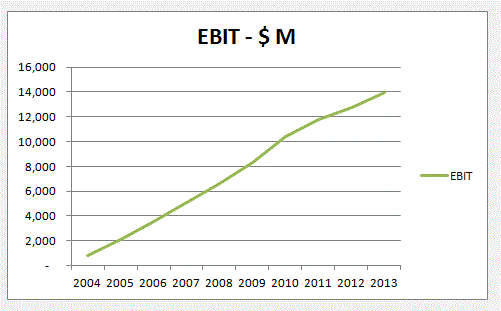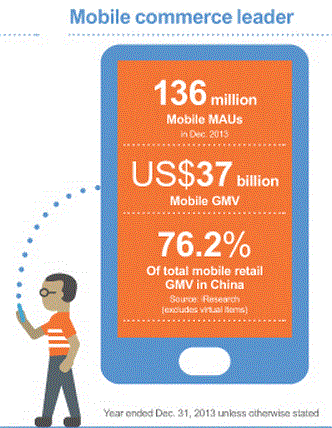The decade ago
On 18 August 2004 a not-so obscure company came out with its first time public offer of 22.53 m Class A shares at a price of $85 per share. Of this 14.14 m shares were sold by the company and the remaining 8.39 shares were sold by the selling shareholders, making the offer one of the biggest in history in dollar terms. The company collected $1.2 b in cash. The rest as they say is history.
On 18 August 2004 a not-so obscure company came out with its first time public offer of 22.53 m Class A shares at a price of $85 per share. Of this 14.14 m shares were sold by the company and the remaining 8.39 shares were sold by the selling shareholders, making the offer one of the biggest in history in dollar terms. The company collected $1.2 b in cash. The rest as they say is history.
Google Inc. was incorporated in 1998. As the
company itself puts it, Google is a global technology leader focused on
improving the ways people connect with information. The mission is to organize
the world’s information and make it universally accessible and useful.
The decade after
Well, it looks like so far it has lived up to all that is said. Market value of its equity stands over $385 b today.
The decade after
Well, it looks like so far it has lived up to all that is said. Market value of its equity stands over $385 b today.
Google basically derives most of its revenues from online advertising. Other
revenues consist of non-advertising revenues including licensing, hardware and
digital content.
Google's revenue has increased from $3.2 b (2004) to $59.8 b (2013) and operating income from $840 m to $13.9 b.
Return on capital has come down to a more reasonable 42.86% in 2013.
Pretax operating margin is steady at 23.34% (2013).
Google's share in international market has only increased. Now its revenues outside of the US is 54%.
The cash.......trapped
Google has been hoarding cash big time. As of December 2013 it had cash of $58.7 b.
Google's revenue has increased from $3.2 b (2004) to $59.8 b (2013) and operating income from $840 m to $13.9 b.
Revenue composition in 2013 was as follows:
For Google, operating margin on advertising revenues are higher than on other revenues.
Return on capital has come down to a more reasonable 42.86% in 2013.
Pretax operating margin is steady at 23.34% (2013).
Google's share in international market has only increased. Now its revenues outside of the US is 54%.
Pretax income from domestic
operations was $5.8 b and from foreign operations was $8.7 b in 2013.
Revenues
Most of its customers pay Google on a cost-per-click basis (Google AdWords), i.e. the customer (advertiser) pays only when a user clicks on one of its ads.
There are also cost-per-impression revenues where advertisers pay Google based on the number of times their ads display on its websites and Google Network Members’ websites.
Google distributes its advertisers’ AdWords ads for display on Google Network Members’ websites through its online program, Google AdSense. These revenues are recognized on a gross basis because Google considers that it is the primary obligor to its advertisers.
Revenues are poised to grow in future as online commerce takes off.
Operating margins and return on capital
We can expect its operating margins and return on capital to come down slowly in the next decade before they reach to more sustainable figures. How about 20% margin and 15% return on capital?Operating margins and return on capital
The cash.......trapped
Google has been hoarding cash big time. As of December 2013 it had cash of $58.7 b.
It can do a lot of things with that cash. It can buy Twitter for $30 b and LinkedIn for $27 b, or it can buy Tesla for $33 b. It is not likely, though.
As of that date, $33.6 b of cash was held by its foreign subsidiaries and was considered trapped, as this cash cannot be used for paying dividends, doing stock buy-backs or investments in US. Unless of course the differential tax (between tax rate where it was earned and the US tax rate) is paid on that cash before bringing it to the US. This is thanks to the US tax code.
As of that date, $33.6 b of cash was held by its foreign subsidiaries and was considered trapped, as this cash cannot be used for paying dividends, doing stock buy-backs or investments in US. Unless of course the differential tax (between tax rate where it was earned and the US tax rate) is paid on that cash before bringing it to the US. This is thanks to the US tax code.
Nevertheless, Google does not consider the cash as trapped because it wants to permanently reinvest outside of the US and its current plans do not demonstrate a need to repatriate them to fund its US operations.
This is a clever way of saying unless you change the tax code we will keep cash outside. Too many US firms are behaving in a similar manner of late as too many of them keep generating more cash outside of the US. The debate over being patriotic or just rational is getting hotter today.
Acquisitions and goodwill
Google has done a number of acquisitions over the decade; a cumulative $20 b of cash has been spent.
Click Holding Corp. (DoubleClick), a company that offers online ad serving and management services to advertisers, ad agencies and web site publishers, was acquired in March 2008 for $3.2 b of which $2.3 b was attributed to goodwill.
It is clear that Motorola was not the right candidate for synergy benefits.
The carrying value of goodwill is expected to generate cash flows of at least $11.5 b in terms of present value. Otherwise, it will be considered impaired, i.e. Google overpaid for its acquisitions.
Voting powers and control - Is it a fair deal, who cares?
Google has more than one class of shares. Class A shares with voting rights and traded, Class B shares with significant voting rights and not traded, and Class C shares without any voting rights (except as required by applicable law) and traded.
As of December 2013, approximately 92.2% of Class B shares beneficially belonged to Larry Page, Sergey Brin, and Eric Schmidt, which translates into approximately 61.7% of the voting power.
There is no chance that any outside shareholder would be able to influence corporate decisions at Google. None.
Click Holding Corp. (DoubleClick), a company that offers online ad serving and management services to advertisers, ad agencies and web site publishers, was acquired in March 2008 for $3.2 b of which $2.3 b was attributed to goodwill.
Motorola was acquired in 2012 for $9.6 b (net of cash taken over) which resulted in
$2.5 b of goodwill. Motorola Home was sold in April 2013 for $2.5 b to Arris Group Inc. including a
7.8% ownership in Arris, and Motorola Mobility was sold in January 2014 for $2.9 b
to Lenovo including some shares in Lenovo.
It is clear that Motorola was not the right candidate for synergy benefits.
The carrying value of goodwill is expected to generate cash flows of at least $11.5 b in terms of present value. Otherwise, it will be considered impaired, i.e. Google overpaid for its acquisitions.
Voting powers and control - Is it a fair deal, who cares?
Google has more than one class of shares. Class A shares with voting rights and traded, Class B shares with significant voting rights and not traded, and Class C shares without any voting rights (except as required by applicable law) and traded.
As of December 2013, approximately 92.2% of Class B shares beneficially belonged to Larry Page, Sergey Brin, and Eric Schmidt, which translates into approximately 61.7% of the voting power.
In April 2014, stock dividends in the form of Class C shares were distributed (1:1 ratio) to the holders of Class A and Class B common stock.
As of June 2014, there were 675.91 m common shares were outstanding.
As of June 2014, there were 675.91 m common shares were outstanding.
It is very clear who controls Google, and if there are any further doubts, it is cleared in the form of the power of the board to issue, without stockholder approval, preferred stock with voting or other rights or preferences that could block any attempts of hostile acquisition.
There is no chance that any outside shareholder would be able to influence corporate decisions at Google. None.
The next decade
Google is in a good position to take its best steps forward. As online business expands and emerging markets open up, there are immense opportunities to grow both in terms of size and value. Google has been reinvesting earnings back in its business with average reinvestment rate of 50.75%. It has also been spending sizable amounts on research and development each year.
How much it will grow in value in the next decade will depend upon how much revenues it will generate, how much it will earn in terms of operating margin and return on capital, how much reinvestment it will make, and the odds of making it.
Who wins this online warfare ultimately is any body's guess. However, as long as Google does not do anything stupid with its large cash the odds appear to be in its favor.
Will it live up to its current story line? Again as Google itself puts it, its business is characterized by rapid change and converging, as well as new and disruptive, technologies.
Google is in a good position to take its best steps forward. As online business expands and emerging markets open up, there are immense opportunities to grow both in terms of size and value. Google has been reinvesting earnings back in its business with average reinvestment rate of 50.75%. It has also been spending sizable amounts on research and development each year.
How much it will grow in value in the next decade will depend upon how much revenues it will generate, how much it will earn in terms of operating margin and return on capital, how much reinvestment it will make, and the odds of making it.
Who wins this online warfare ultimately is any body's guess. However, as long as Google does not do anything stupid with its large cash the odds appear to be in its favor.
Will it live up to its current story line? Again as Google itself puts it, its business is characterized by rapid change and converging, as well as new and disruptive, technologies.
























